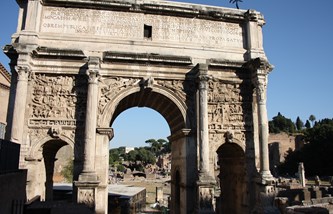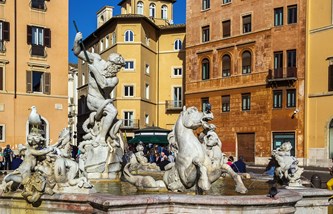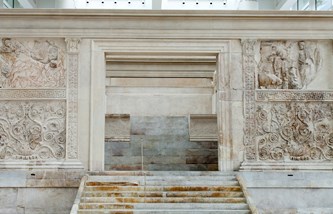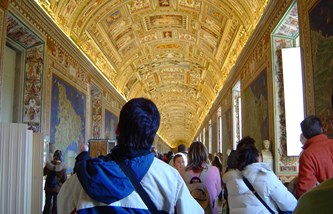Tours
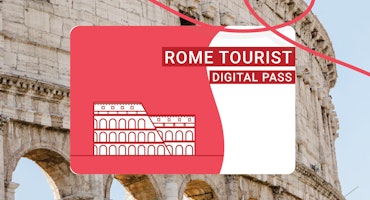
Toeristenkaart van Rome
Toeristenkaart van Rome
Dit combiticket geeft je toegang tot 5 topplekken in de stad Rome: het Colosseum (inclusief het Forum Romanum en de Palatijn), de Vaticaanse Musea, Sixtijnse Kapel en de Hop on/off bus.
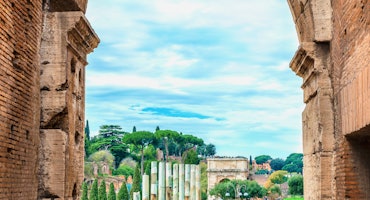
Colosseum, Forum Romanum & Palatijn: priority-toegang
Colosseum, Forum Romanum & Palatijn: priority-toegang
Sla de lange rijen over met dit ticket voor voorrang bij binnenkomst. Na bezichtigen van het Colosseum kun je daarna naar het Forum Romanum en de Palatijnse heuvel gaan, deze zijn gelegen tegenover het Colosseum.
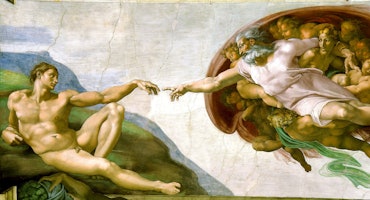
Vaticaanse Musea & Sixtijnse Kapel
Vaticaanse Musea & Sixtijnse Kapel
Met dit ticket bespaar je stress en tijd doordat je voorrang bij de ingang krijgt en de rij kunt overslaan. Bezoek de schitterende meesterwerken van Michelangelo, Rafaël, Caravaggio, Tiziano en de Sixtijnse kapel.
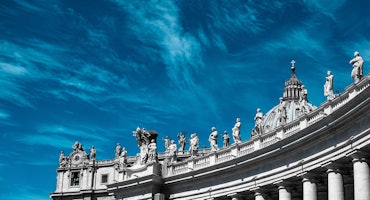
St. Peter's Basiliek: Koepelklim met gids
St. Peter's Basiliek: Koepelklim met gids
Krijg een rondleiding en beklim de koepel van de basiliek. Bewonder één van de mooiste uitzichten ter wereld. Na de rondleiding kan je de rest van de basiliek op je eigen tempo verkennen.
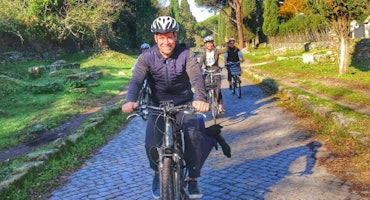
Appia Antica fietsverhuur
Appia Antica fietsverhuur
Ontdek een stukje Romeinse geschiedenis, terwijl je fietst langs bekende bezienswaardigheden in Appia Antica. Behalve fietsen voor volwassenen, zijn er ook fietsen voor kinderen beschikbaar.
Circus Maximus
Showbusiness was een heel serieuze zaak in Rome. De inwoners hielden ervan om vermaakt te worden en het Circus Maximus was ontworpen als een volledig uitgeruste ruimte, met een ongelooflijk grote renbaan, compleet met winkels, eetkraampjes en natuurlijk bookmakers.
Het Circus Maximus was de grootste locatie voor shows, uitvoeringen en races uit de oudheid. Met een lengte van 600 meter, een breedte van 140 meter en een capaciteit van ongeveer 300.000 toeschouwers wordt het eigenlijk beschouwd als het grootste gebouw voor amusementsdoeleinden in de hele geschiedenis van de mensheid. Om je een vergelijkingsbasis te geven: het May Day Stadium (in Noord-Korea), het grootste‘moderne’gebouw van onze tijd, biedt plaats aan ’slechts’ 150.000 mensen.
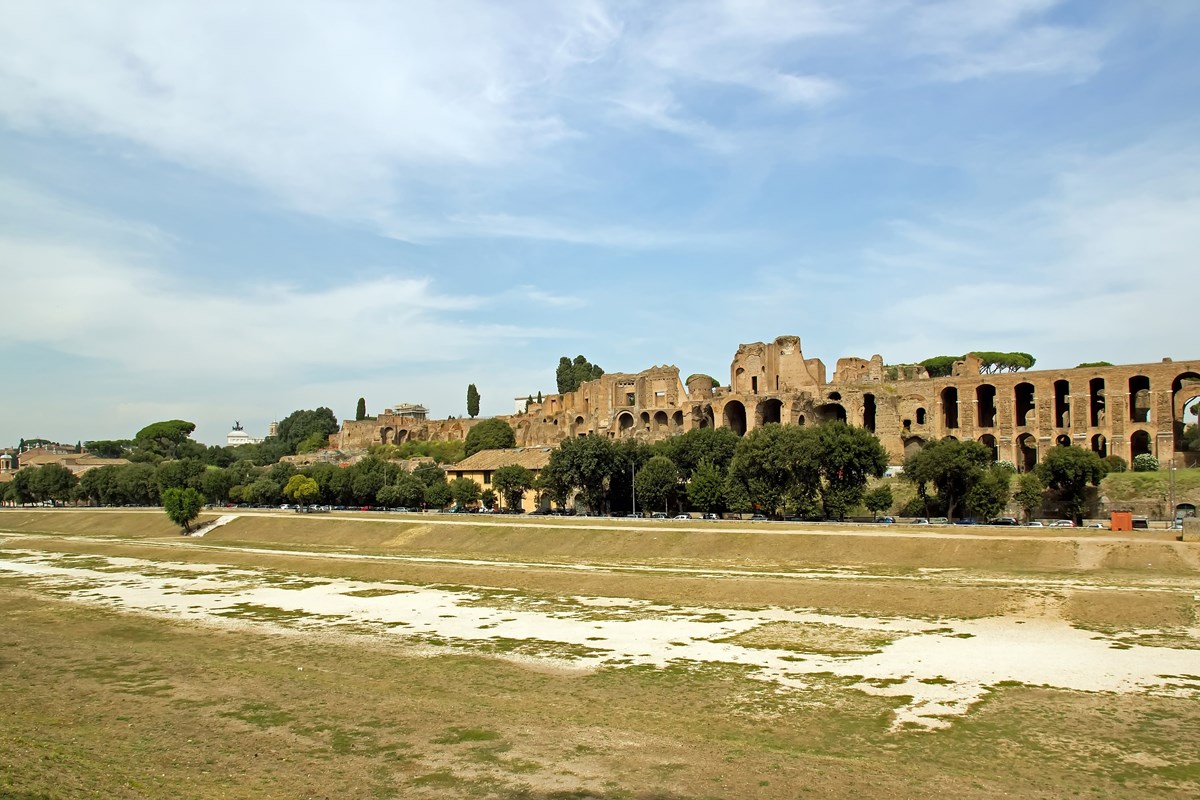
Geschiedenis
Het oorspronkelijke circus werd gebouwd in de zesde eeuw voor Christus, tussen de Palatijn en de Aventijn, toen Rome nog een koninkrijk was en geen rijk, door de wil van koning Tarquinio Prisco. De plaats werd oorspronkelijk gebruikt als renbaan voor wagenrennen.
In 50 voor Christus breidde Julius Caesar het circus uit, dat een bakstenen structuur werd met de centrale ruggengraat, een lang centraal platform versierd met beelden en heiligdommen. Later voegde Augustus de "pulvinar" toe aan het podium, de Imperial Box om naar wedstrijden te kijken, in feite is dit de voorloper van de moderne V.I.P. Lounge. Hij voegde ook een obelisk toe om zijn overwinningen in Egypte te vieren.
In 81 na Christus wilde de Senaat een triomfboog bouwen, ter ere van keizer Titus. De boog bevond zich aan de korte oostkant en had drie grote vergulde bronzen kegels gegroepeerd op een hoge halfronde basis. Deze boog diende als toegang tot het Circus Maximus.
Door de jaren heen hebben drie verschillende branden de structuur ernstig beschadigd. Het was keizer Trajanus, die het uiteindelijk in zijn oorspronkelijke pracht herstelde. In de vierde eeuw werd een tweede obelisk uit Egypte meegebracht en op de ruggengraat geplaatst, waardoor het zijn oorspronkelijke uiterlijk kreeg. De tribunes waren drie verdiepingen hoog, gemaakt van steen en bekleed met marmer.
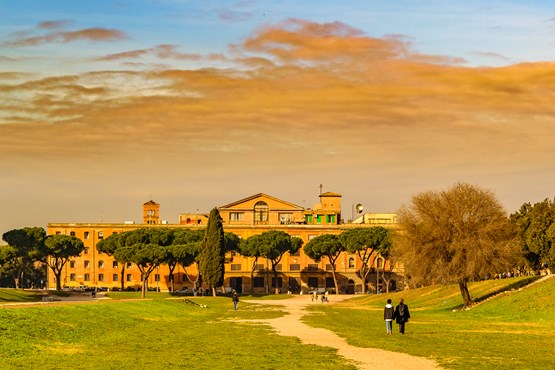
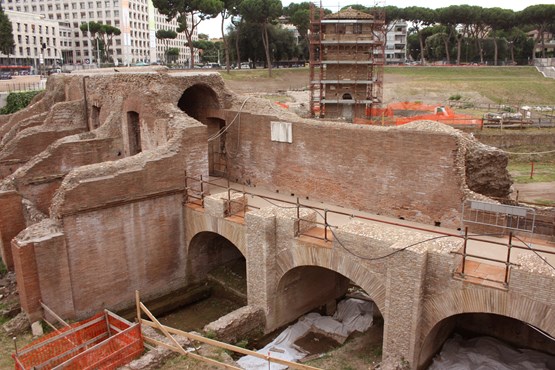
De Romeinse spelen (Ludi Romani)
De Romeinen hielden van gladiatorengames en shows met vier paards wagenrennen genaamd "quadrighe". De deelnemers waren meestal slaven, georganiseerd in "teams" en de prijs die voor het grijpen lag was hun vrijheid. De supporters van de meest succesvolle renners verzamelden zich in grote groepen op de tribunes en juichten hun favoriete renners toe met hetzelfde enthousiasme dat je kunt zien tijdens een hedendaagse voetbalwedstrijd.
Andere shows waren onder meer de jachtpartijen van wilde dieren, theatervoorstellingen, gevechten tussen gladiatoren en zeer ongebruikelijke gebeurtenissen, zoals een dodelijke botsing tussen een groep gladiatoren en twintig olifanten, georganiseerd door Pompeo, een prominente politieke leider in de eerste eeuw voor Christus.
Rondom het circus waren supermarkten, tavernes, wasserijen, maar ook pakhuizen, bordelen, wisselkantoren en gokwinkels. Enkele overblijfselen van deze gebouwen zijn nog steeds zichtbaar.
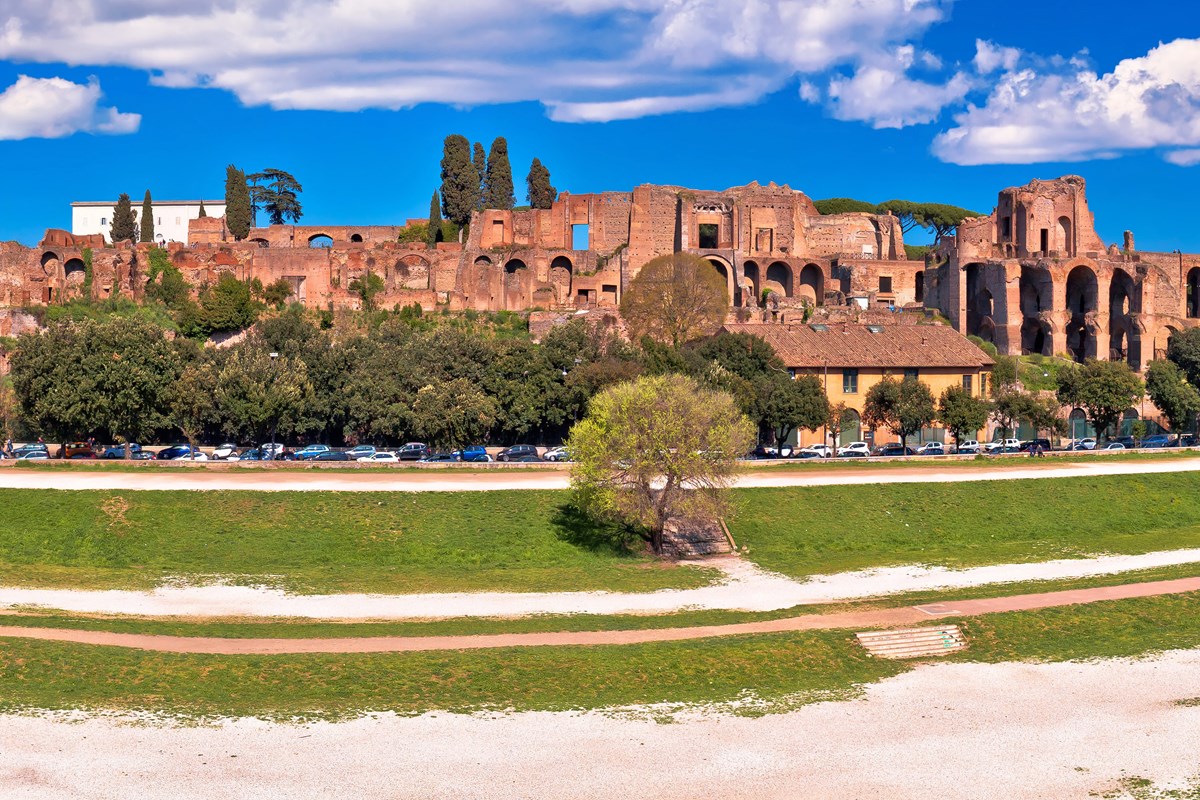
Circus Maximus vandaag
Tegenwoordig vertoont deze plek niet veel van zijn oorspronkelijke pracht. De met gras bedekte racebaan en de omtrek van de midden barrière zijn de enige elementen die over zijn van de oorspronkelijke plattegrond. Enkele overgebleven tribunes en de twee Egyptische obelisken die ooit het stadion versierden, werden verplaatst. De ene werd geplaatst op de Piazza del Popolo en de tweede werd verplaatst naast de Basiliek van Sint-Jan in Lateranen.
Aan de zuidkant is er een panoramisch terras en een middeleeuwse toren, Torre della Moletta genaamd, die is gerestaureerd en nu toegankelijk is tot op de tweede verdieping, waar je van een mooi uitzicht kunt genieten.
Dankzij de technologie van de hedendaagse tijd kun je genieten van een uniek bezoek. Je kunt een spannende augmented reality-tour boeken, genaamd de Circus Maximus Experience. Je krijgt speciale vizieren om rond de site te lopen en de oorspronkelijke schoonheid en monumentale pracht te bewonderen. Hieronder kunt je een korte presentatie van de tour bekijken. (VIDEO)
Het Circus Maximus wordt vaak gebruikt als locatie voor grote evenementen of concerten met onder meer internationale sterren, zoals Bruce Springsteen of de Rolling Stones. Overdag komen Romeinen hier om te joggen of gewoon te ontspannen in de zon.
De omgeving
Aan de zijkant van het circus zie je de ruïnes van het thermale complex gebouwd door keizer Septimius Severus. En als je een wandeling maakt naar de Aventijnse heuvels, dan zijn er een paar heel speciale plekken die je echt niet wilt missen als je de stad bezoekt.
Eén daarvan is de Sinaasappel tuin (Giardino degli Aranci), een park op de top van de heuvel, met een groot terras waar je kunt genieten van een prachtig uitzicht over de stad. Net buiten het park vind je de prachtige basiliek van Santa Sabina, een paleo Christelijke kerk die dateert uit de zesde eeuw na Christus, die in de loop der jaren in verschillende fasen is gerestaureerd en beschikt over ongelooflijke kunstwerken. Onder de kerk is het mogelijk om de overblijfselen van de oude structuur en mozaïeken uit de tijd van het Romeinse rijk te bezoeken.
Ga verder op Santa Sabina Straat (Via di Santa Sabina) en hier, waar de weg breder wordt, vind je één van de beroemdste plekken om de Sint. Pieter te spotten vanuit… een sleutelgat! Wanneer de weg breder wordt, is er aan je rechterkant de marmeren poort van de Priorij van de Ridders van Malta, de hoofdverblijfplaats van de orde.
De monumentale entree is voorzien van een deur. Als je door het sleutelgat kijkt, zal je ontdekken dat het recht naar de koepel van Sint. Pieter wijst. Is dat toeval? Blijkbaar niet, want de architect Piranesi, die de ingang in 1765 herstructureerde, kreeg dit werk in opdracht van een zeer invloedrijke kardinaal.
